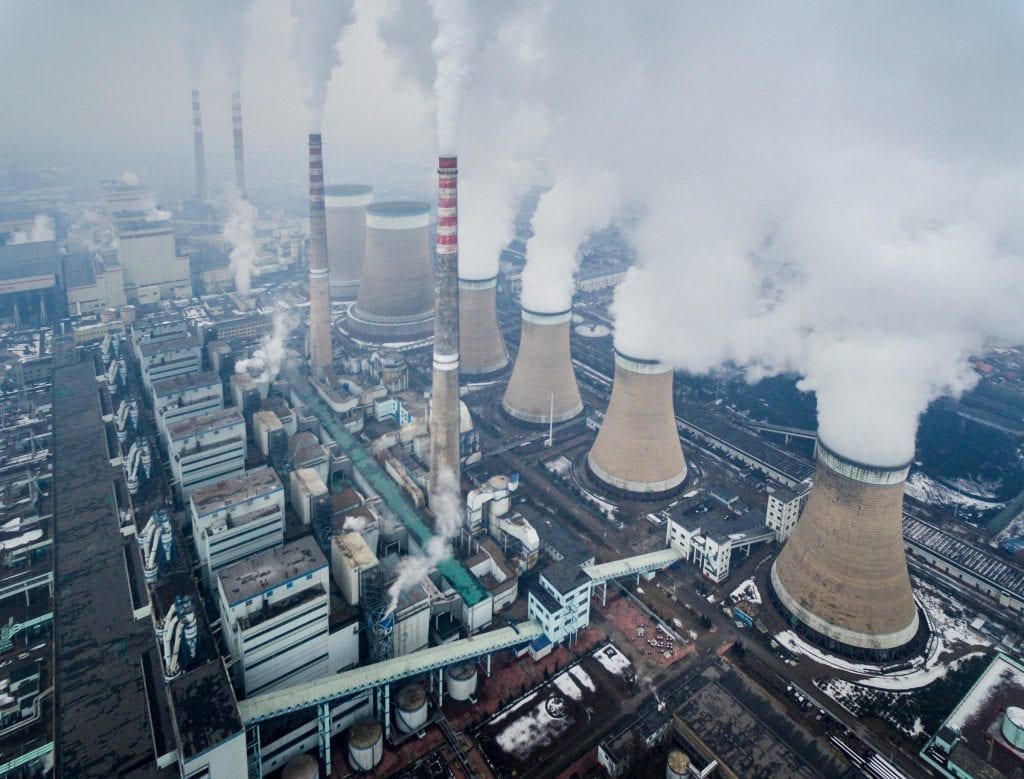China Approves 106 GW of New Coal-Fired Capacity
A new report from a two global energy research groups found that China last year approved its most new coal-fired power generation projects since 2015.
The report from the Center for Research on Energy and Clean Air (CREA) and Global Energy Monitor (GEM) shows the Chinese government approved permits for 106 GW of new coal-fired generation capacity in 2022. The report said the new capacity was spread across 82 sites in China, with a total of 168 coal-fired units, and was four times the amount of new coal-fired power capacity permitted compared to the prior year.
“China continues to be the glaring exception to the ongoing global decline in coal plant development,” said Flora Champenois, a research analyst at GEM, a nonprofit group that tracks infrastructure tied to fossil fuels “The speed at which projects progressed through permitting to construction in 2022 was extraordinary, with many projects sprouting up, gaining permits, obtaining financing and breaking ground apparently in a matter of months. This kind of a process leaves little room for proper planning or consideration of alternatives.”
Government data shows China gets about 60% of its electricity from coal-fired power plants.
At Least 50 GW Under Construction in 2022
The report’s authors noted that not all that capacity is likely to be built, though at least 50 GW of coal-fired generation capacity did begin construction in China in 2022. The groups in the report said, “Many of these projects had their permits fast-tracked and moved to construction in a matter of months.” The report said that, “Of the projects permitted in 2022, 60 GW were not under construction in January 2023, but are likely to start construction soon, indicating even more construction starts in 2023.”

The report said that China saw a rapid increase in periods of peak loads for power over the past two years, particularly from the use of air conditioners as the country experienced several intense heat waves. That has prompted continued builds of coal-fired generation even as the country has said it wants to reduce its emissions of greenhouse gases. Officials have said coal-fired generation is critical for the country’s economy as it seeks to avoid energy shortages.
China endured several blackouts in September 2021 as a result of coal supply shortages. Drought conditions last year also reduced electricity production from the nation’s numerous hydropower installations. Those hydro plants include the 10.2 -GW Wudongde facility, POWER’s Top Plant for 2022.
“If China is going to meet its climate commitments, as we expect, these new coal power plants are going to end up as short-lived and under-utilized malinvestments,” said Lauri Myllyvirta, a lead analyst at Finland-based CREA and one of the report’s authors. “To meet China’s goal of peaking CO2 emissions, the most urgent milestone is to scale up investments in clean power generation to cover all of power demand growth, which means declining demand for power generation from coal.”
A lobbying group for China’s electricity sector earlier this year said it expects the country will add 70 GW of coal- and natural gas-fired generation in 2023.
Emissions Targets
China’s President Xi Jinping in 2020 said his country would aim for its carbon emissions to reach their highest point before 2030, with the country aiming for carbon neutrality by 2060. China accounts for about half of the world’s coal production and consumption. The country’s new-builds of coal-fired generation represent about six times the amount of total coal-fired generation capacity added over the past year in the rest of the world. The president in announcing the country’s carbon targets has said China will “phase down” its consumption of coal after 2026, though there has been no commitment to cease construction of new coal-fired power units.
China has said it will no longer build coal-fired power plants in other countries, and also has taken the lead in building renewable energy power facilities, installing about 125 GW of wind and solar power last year according to government data. It also is far and away the global leader in hydroelectricity production.
The authors in the report released Monday wrote, “The worst-case scenario is that the pressure to make use of the newly built coal power plants … leads to a moderation in China’s clean energy build out. This could mean a major increase in China’s CO2 emissions over this decade, undermining the global climate effort, and could even put China’s climate commitments in danger.”
China is still closing some coal-fired units. The report said the country closed 4.1 GW of capacity last year, after retiring 5.2 GW in 2021. Officials, though, have revised policies on closing smaller or inefficient facilities, saying those plants should remain available to provide backup power, or continue operating after retrofits with emissions control technology.
—Darrell Proctor is a senior associate editor for POWER (@POWERmagazine).